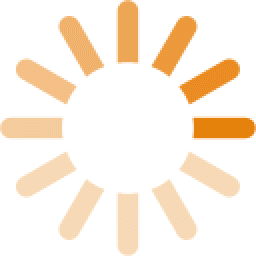The Top 5 Most Common Resume and Job Application Questions — Answered

As Seen In:




If you’ve ever felt overwhelmed by the job search, you’re not alone. At ResumeSpice, we hear from job seekers every day who aren’t sure if their resume is “right,” whether they should send a cover letter, or how to follow up without feeling pushy. Between formatting choices, keyword usage, and navigating the application process, there’s a lot to think about.
The good news? We’ve worked with thousands of job seekers across every industry and career stage, and we’ve seen the same questions come up again and again. Which means we not only know the answers — we know what works in a competitive hiring process.
Below, we’re breaking down the five most common resume and job application questions we get from clients, with practical tips, friendly encouragement, and examples you can use right away.
Key Takeaways
A standout resume is tailored to the job description, showcases measurable results over responsibilities, and reflects leadership skills, communication skills, and relevant experiences from your career path.
Following up — whether after a job application or a job interview — is a professional way to reinforce interest, highlight transferable skills from your last job or previous job, and align yourself with the company’s culture and work environment.
Including a cover letter, even when optional, allows you to expand on your greatest accomplishment, demonstrate self awareness, and connect your career goals to the employer’s needs.
1️⃣ How Long Should My Resume Be?
The truth is, there’s no one-size-fits-all answer. The right resume length depends on your career stage and the industry you’re in. Your goal is to give hiring managers the essential information they need — quickly — without overwhelming them with irrelevant details.
📌 General resume length guidelines:
Entry-level: Keep it to one page. Focus on your most recent and relevant experience, education, and key accomplishments.
Mid- to senior-level: Two pages is standard, allowing space for leadership skills, results from your last job and previous job, and examples of managing diverse teams or high-impact projects.
Executive-level: Two pages, sometimes three if you have major achievements or certifications worth highlighting.
Why does resume length matter?
Hiring managers spend an average of 6–8 seconds scanning a resume before deciding whether to keep reading. In that short time, they’re looking for a few key things: your position title, career path, relevant skills, and recent accomplishments that align with the job description. The right resume length ensures they can quickly find the right answer to “Does this candidate fit what we need?”
🔶Tip: Need some guidance? Check our our blog that dives into the details of the age old question, should you limit your resume to one page.
One-page resumes: A one-page resume is like an elevator pitch — short, powerful, and focused. It’s great for early-career professionals or those applying to industries that value brevity. It forces you to prioritize only the most impactful information.
Pros: Quick to read, easy for applicant tracking systems (ATS) to scan, and forces you to highlight your strongest points.
Cons: Can feel limiting for candidates with extensive experience, multiple roles at the same company, or major projects that deserve more detail.
Multi-page resumes: If you have over a decade of experience, led diverse teams, or delivered large-scale projects, a two-page resume may serve you better. Senior-level professionals, project managers, or those with employment gaps may also need more space to explain their career path or highlight volunteer work, certifications, and other relevant skills.
Pros: Allows space to show depth of experience, leadership skills, and measurable results from both your current job and last job.
Cons: If not well-edited, a longer resume can become cluttered, harder to scan, and less impactful. Unsure of how long your resume should be?
🌟Remember: Your cover letter can provide additional information or context you can’t fit on your resume. Learn about 5 ways to customize your cover letter (without forcing it).
2️⃣ Do I Need to Customize My Resume for Every Job Application?
Yes! And if you want to improve your chances of advancing in the hiring process, tailoring your resume to each role is non-negotiable. Sending the same generic version to multiple job postings can make it harder to stand out, especially when most companies rely on ATS to filter resumes before they ever reach a hiring manager.
Why does customizing your job application work?
ATS software scans for keywords directly from the job description. If your resume doesn’t match the role’s required skills — whether that’s “digital marketing,” “sales team leadership,” “project managers,” or “communication skills” — your application may be screened out automatically. And if it does make it to a recruiter, a customized resume shows that you’ve researched the company’s culture, understand the work environment, and are a team player who’s genuinely interested in the position. This not only helps you stand out from other candidates but also gives you a stronger starting point for common job interview questions later in the hiring process.
Feeling overwhelmed at the idea of resume customization? Finding yourself wondering, what is the average cost for a resume writer? Our team is here to help! Get in contact with our professional resume writers today.
🏁 How to customize your resume efficiently:
Match the job title in your resume headline and professional summary so it’s immediately clear which role you’re applying for.
Mirror the job description’s language in your bullet points and skills section. Use a few examples from your previous job, last job, or current job that highlight leadership skills, relevant experiences, and your greatest accomplishment.
Highlight your most relevant achievements first. If you improved an underperforming employee, led diverse teams, or delivered high quality work that aligns with the company’s career goals, make sure it appears near the top.
Show alignment with the company’s culture by emphasizing work style, collaboration with direct reports, or how you’ve solved problems in past roles.
Keep a master resume with your complete career path, skill set, and past roles. Pull targeted bullet points for each new position you apply for. This same approach will also help you prepare for interview questions — you’ll already have great answers ready for behavioral prompts like, “Tell me about your greatest accomplishment” or “Describe a time you handled stressful situations.”
🌟Remember: A tailored resume makes the interview process easier. You’ll already have concrete examples to draw from, making it simpler to give the right answer, demonstrate self awareness, and position yourself as a great candidate for the role. By customizing for each job, you’re not just improving your chances of being noticed — you’re setting yourself up for stronger job interview performances and better career growth opportunities.
3️⃣ Should I Include a Cover Letter With My Job Application?
Almost always. If the job posting says it’s required, it’s a must. But even if it’s optional, a tailored cover letter can set you apart in the hiring process and make a strong case for why you’re the right person for the position title.
While your resume covers your career path and key accomplishments, your cover letter lets you connect directly with the hiring manager, reference the specific job description, and explain why you’re genuinely interested in both the role and the company’s culture. It’s also a great way to demonstrate communication skills, leadership skills, and self awareness — qualities that matter just as much as technical expertise in a job interview.
A strong cover letter is especially important if you’re making a shift in your career path, returning to the workforce after an employment gap, or moving from your current job into a new work environment. It can also help highlight transferable skills from your last job or previous job, showing how they apply to the new role. Whether you’re in digital marketing, project management, sales, or software development, this is your chance to tell a story that your resume alone can’t.
Looking for professional cover letter help? Let one of our career consultants write your cover letter. Our recruiter-built ResumeSpice team is on deck and ready to take the wheel.
✉️ Cover letter best practices:
Keep it concise — one page is ideal so you respect the hiring manager’s time.
Address it to the hiring manager’s name whenever possible. If the job posting doesn’t list the hiring manager’s details, research on LinkedIn or the company’s site.
Mention specific aspects of the company’s culture, mission, or work environment that match your career goals.
Include a few examples that showcase your leadership skills, ability to work with diverse teams, or experience as a team player — whether in your sales team, direct reports, or cross-functional groups.
Tie your background to the job description by referencing relevant achievements, such as improving a sales team’s performance, mentoring an underperforming employee, or leading a project that required collaboration across diverse teams.
🔶 Tip: Even if the online application process doesn’t require a cover letter, upload one as a PDF whenever the system allows. This small but powerful step can help you stay top of mind, position you as a thoughtful candidate, and give you an edge over other applicants in the hiring process!
4️⃣ What is the Best Way to Follow Up After Submitting My Job Application?
Following up can be a game-changer in your career path — if you do it professionally. It’s one of the most common job application questions we hear from clients, and the right approach can make all the difference in the hiring process. A well-timed, thoughtful follow up email shows self awareness, strong communication skills, and genuine interest in the company’s culture and work environment.
⏳ When to follow up during the job interview process:
After submitting your application: If the job posting doesn’t list a timeline for the hiring process, wait about one to two weeks before sending your follow up email. This gives the hiring manager time to review applications without feeling rushed.
After a job interview: Send a thank-you email within 24 hours. This is your chance to reference something specific from the conversation, highlight your greatest accomplishment or leadership skills, and show that you’re a team player who’s excited about the role. If you haven’t heard back by the date they mentioned, it’s fine to send a polite follow up message.
When instructions are provided: If the job description says “No calls” or lists a specific response timeframe, follow those instructions exactly. Respecting the company’s culture and the hiring manager’s time shows professionalism — a quality they look for in a great candidate.
💬 What to include in your follow up email:
A warm greeting using the hiring manager’s name.
A quick reminder of the position title and when you applied or interviewed.
One or two examples from your previous job or last job that align with the job description. For instance, if the role involves leading a sales team, managing project managers, or working with diverse teams, mention your direct experience in those areas.
Skills that are directly relevant — whether it’s digital marketing, leadership skills, or solving problems in a fast-paced work environment.
A short statement about your career goals and how they align with the new position.
An offer to provide additional information, such as details about high quality work you’ve done, how you overcame an employment gap, or your work style in collaborative settings.
Example Follow Up
Dear Jennifer,
Thank you for taking the time to meet with me today. After learning more about the accounting manager position, I’m even more enthusiastic about the opportunity to join ABC Company’s team and contribute to your company’s culture and goals.
In my previous job as a CPA, I led diverse teams and applied my leadership skills to develop tax planning strategies that reduced exposure and minimized liabilities — directly supporting business growth. I believe my track record of delivering high quality work, along with my ability to solve problems in fast-paced work environments, aligns closely with the job description and the expectations for this role.
Please let me know if I can provide any additional information or examples from my career path that demonstrate my fit for the position. I look forward to hearing about the next steps in the hiring process.
Sincerely,
Mike Smith
You can also include a few follow up questions in your message, such as asking about the next stage of the hiring process or what qualities they value most in a team player for this role. This not only keeps the conversation going but also helps you prepare for potential job interview questions.
5️⃣ What’s the Biggest Mistake to Avoid on a Resume?
The biggest mistake? Listing responsibilities instead of results.
Hiring managers and recruiters already know what basic responsibilities come with most roles — they want to see impact. Your resume should answer the question, “What did you actually achieve in your last job or previous job?” This is especially important in a competitive hiring process where you’re up against candidates with similar job descriptions on paper.
🚨 Instead of this: Responsible for managing marketing campaigns.
✅ Say this: Led marketing campaigns that increased qualified leads by 40% and generated $500,000 in revenue within six months for the sales team.
🚨 Instead of this: Oversaw a team of account managers.
✅ Say this: Directed and mentored a team of 12 account managers, achieving a 95% client retention rate and driving a 20% year-over-year revenue increase.
🚨 Instead of this: Handled company budget.
✅ Say this: Managed a $5M annual budget, optimizing allocations to reduce costs by 15% while funding strategic growth initiatives across diverse teams.
Other common resume mistakes to avoid:
Typos or grammatical errors — these can signal a lack of attention to detail.
Inconsistent formatting — messy layouts make it harder for hiring managers to read.
Outdated or incorrect contact details — always verify your phone number and email.
Listing every role you’ve ever had — focus on relevant experiences that align with the job description, company’s culture, and your career goals.
Failing to tailor content — make sure each bullet point connects to the skills and leadership abilities needed in the new position.
🌟Remember: Use metrics whenever possible. Numbers grab attention, prove the quality of your work, and demonstrate your ability to deliver results in different work environments. Employers respond best to a great answer that blends measurable achievements with a clear tie-in to the company’s culture, leadership skills, and overall hiring needs.
🌟 Bonus: Quick Answers to Other Common Resume & Application Questions
Q: How do I explain an employment gap?
A: Be brief, honest, and positive. If you used the time to learn a new skill, volunteer, or work on personal projects, highlight how those experiences strengthened your communication skills, leadership skills, or ability to work with diverse teams. Tie it back to your career goals so it’s seen as part of your career path rather than a setback.
Q: Should I use a resume template?
A: Yes — as long as it’s clean, professional, and ATS-friendly. Avoid templates with complicated graphics or tables that could cause issues during the hiring process. The right format should make your job description details, skill set, and high quality work stand out.
Q: Can I reuse my follow up email for multiple jobs?
A: You can reuse the structure, but always personalize it for the specific job description. Reference the company’s culture, position title, and relevant experiences from your last job or previous job. This shows self awareness and genuine interest in the work environment.
Q: How soon should I send a thank-you email after a job interview?
A: Within 24 hours. Reference something specific from the conversation — whether it’s about the sales team, work environment, or a project that excites you. This small step can help you stand out in the hiring process.
Q: Should I include a cover letter if it’s optional?
A: Yes. A strong cover letter lets you highlight your greatest accomplishment, show leadership skills, and explain how your work style fits the company’s culture. It’s also a great place to connect your career goals and past roles to the job description.
Q: How do I talk about leadership skills if I don’t manage direct reports?
A: Leadership isn’t only about managing people. Share a few examples of times you led a project, trained team members, solved problems, or influenced decisions. These situations demonstrate leadership skills and make for great answers to job interview questions.
Q: What if my last job is unrelated to the new position I’m applying for?
A: Focus on transferable skills. For example, if you’re moving from digital marketing to a sales team role, highlight communication skills, working with diverse teams, and measurable results. Link them directly to the job description so they’re clearly relevant.
Q: Can I leave off early career roles from my resume?
A: Yes, especially if they’re more than 10–15 years old or unrelated to your current job search. Prioritize relevant experiences that show you’re the right answer to the company’s needs and support your career path.
Q: Is it okay to ask about salary expectations before the job interview?
A: If the range isn’t in the job description, wait until later in the hiring process. When asked, share a range based on market research and tie it to the high quality work, leadership skills, and value you bring to the role.
Summary
Navigating the hiring process successfully means going beyond the basics. From customizing your resume for each job description, to sending a timely follow-up after a job interview, to crafting a thoughtful cover letter that aligns with the company’s culture, every detail counts. By focusing on measurable results, showcasing relevant skills from your last job or previous job, and maintaining professionalism at every step, you can position yourself as a great candidate who not only meets the qualifications, but also fits the work environment and supports the organization’s career goals. These strategies won’t just help you land an interview — they’ll set you up for long-term personal growth and success in your career path.
Ready to make your next application your strongest yet?
If you need input, advice, or a custom resume, cover letter, or LinkedIn profile, call ResumeSpice today – we would love to help!










